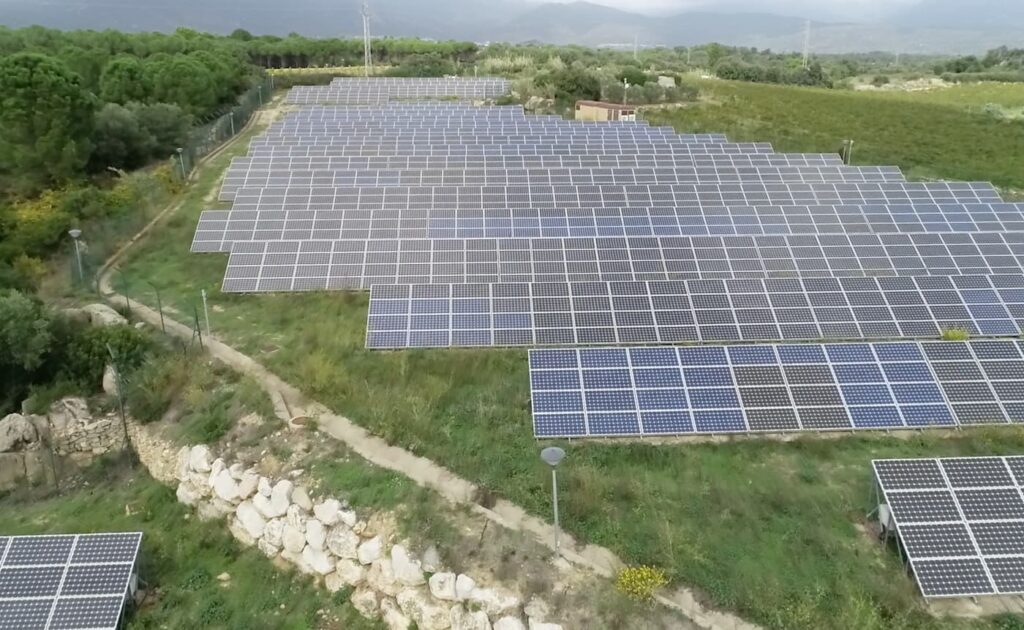Solar panels have become one of the most effective solutions for harnessing renewable energy. With the increasing demand for clean energy, it is essential to understand the technology behind solar panels, their dimensions and how they influence their performance.
In this article, we explore the measurements of solar panels, how they affect their efficiency and the main applications of this technology.
Dimensions of the most common solar panels
Solar panels come in different sizes and shapes, depending on their use. The most common sizes are found in 60-cell and 72-cell panels:
- 60-cell panels:
- Approximate measurements: 1.65 m x 1 m.
- Average weight: 18-20 kg.
- Principal use: Residential facilities.
- 72-cell panels:
- Approximate dimensions: 2 m x 1 m.
- Average weight: 22-25 kg.
- Principal use: Commercial and industrial facilities.
Other sizes are available for specific applications, such as compact panels for small spaces or portable panels for outdoor activities.
How do the measures affect efficiency?
How do the measurements affect the efficiency of solar panels?
The dimensions of solar panels, including their size, shape and number of solar cells, have a direct impact on their ability to generate power, but are not the only determining factor for their efficiency.
Larger panels: In general, larger solar panels have a greater capacity to capture sunlight due to their larger surface area, which increases their power (measured in watt peak or Wp).
- Advantage: Higher energy generation per panel.
- Disadvantage: They require more space for installation, which may limit their use in small ceilings or confined areas.
Smaller panels: Although they generate less energy individually, their flexibility and ease of installation make them ideal for modular systems or in spaces with size restrictions.
- They can be combined into larger systems to achieve the desired capacity.
Main applications and uses of solar panels
1. Energy for homes
Installing solar panels on your home reduces the cost of electricity and minimizes the carbon footprint . They can be installed on:
- Pitched roofs: Maximizes solar gain in single-family homes.
- Self-consumption systems: Connection to the grid to reduce dependence on external supplies.
Industrial and commercial buildings
The installation of solar panels in industrial buildings has large roof surfaces that are ideal for solar panel installations. These installations can:
- Significantly reduce energy costs.
- To power equipment with high energy demand in a sustainable manner.
3. Portable solar panels
Ideal for outdoor activities such as camping or caravan trips. These panels are compact and easy to carry, providing power to charge devices and small appliances.
4. Integration in large systems
Solar panels can also be installed on solar farms or collective systems that supply energy to entire communities, reducing dependence on fossil fuels.
Key factors before installing solar panels
Before installing solar panels, it is essential to consider several aspects:
Size and power selection
Choose the size and power according to:
- Energy consumption: Calculate the energy needs of your home or business.
- Available space: Make sure that the installation area allows for the placement of the panels.
- Orientation and shade: Minimize obstacles that may block sunlight.
Cost analysis and initial investment
Although the initial investment may be high, solar panels usually have a positive long-term return. In addition, in many countries, subsidies and grants are available that significantly reduce the cost.
Local regulations
Review current regulations, such as Royal Decree 244/2019 in Spain, which regulates self-consumption and eliminates the old “sun tax”. This facilitates the integration of solar systems and enables collective self-consumption.
Solar panels represent a sustainable, efficient and increasingly affordable solution to meet the energy needs of the future. From domestic applications to large-scale projects, their versatility makes them a key investment to reduce costs and protect the environment.
If you are considering installing solar panels, consult with experts to ensure you get the most out of your system – join the shift to cleaner, more sustainable energy!
Frequently Asked Questions
What size solar panel do I need for my home?
It depends on energy consumption and available space. An average home requires between 10 and 30 solar panels.
How big is a 500 watt solar panel?
A 500-watt solar panel generally measures approximately 2.1 meters long x 1.05 meters wide (210 cm x 105 cm). This size varies depending on the manufacturer and the technology used, but usually consists of 72 solar cells or high-efficiency configurations such as 144 half-cells.
How big is a 600 watt solar panel?
600-watt solar panels are typically slightly larger than 500-watt panels, measuring approximately 2.3 meters long x 1.1 meters wide (230 cm x 110 cm). These panels typically use advanced technologies such as bifacial cells or more efficient materials, allowing for more power generation on the same surface area.
How big is a 1000 watt solar panel?
Solar panels of 1000 watts are less common and, due to their high power output, their dimensions are usually significantly larger, measuring approximately 2.5 meters long x 1.25 meters wide (250 cm x 125 cm) or more. They are usually used in commercial or industrial applications, where space is not a constraint and maximum power generation is required.
